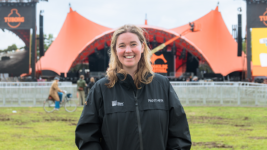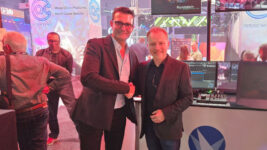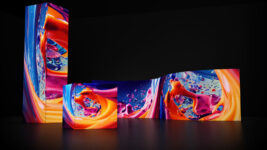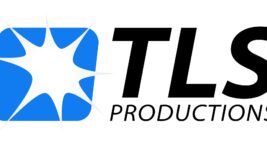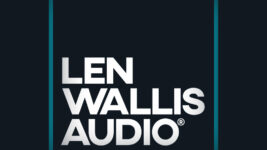LIGHTING
22 Jul 2024
EUROVISION 2024
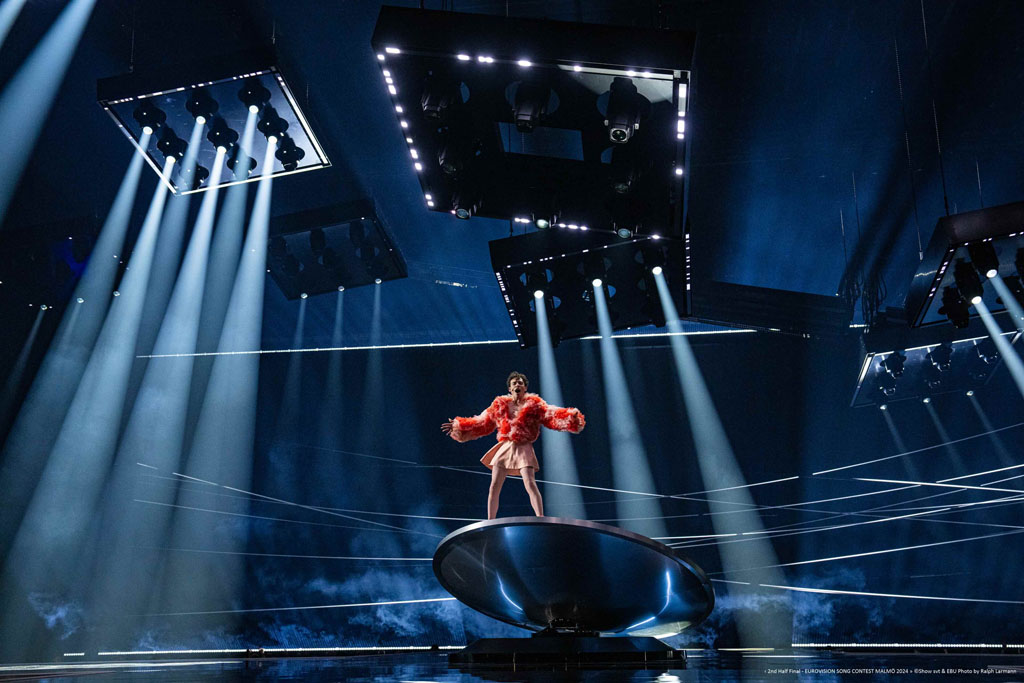
Subscribe to CX E-News
The always reliably bonkers finals of The Eurovision Song Contest 2024 were staged May 7-11 in Malmo Arena, Sweden. The wildly over-the-top technical design allowed the boffins at the European Broadcast Union to play with hundreds of shiny new toys, including lighting fixtures from Robe, ClayPaky, and Ayrton.
With a full arena and more than 160 million watching on live TV, Eva Beckman, Director of Programming at presenting broadcaster Sveriges Television (SVT) described the finals as “three magical shows, bursting with creativity, temperament, humour and professionalism. And a more beautiful TV production I have never seen. I didn’t even dare blink my eyes for fear of missing a single detail.”
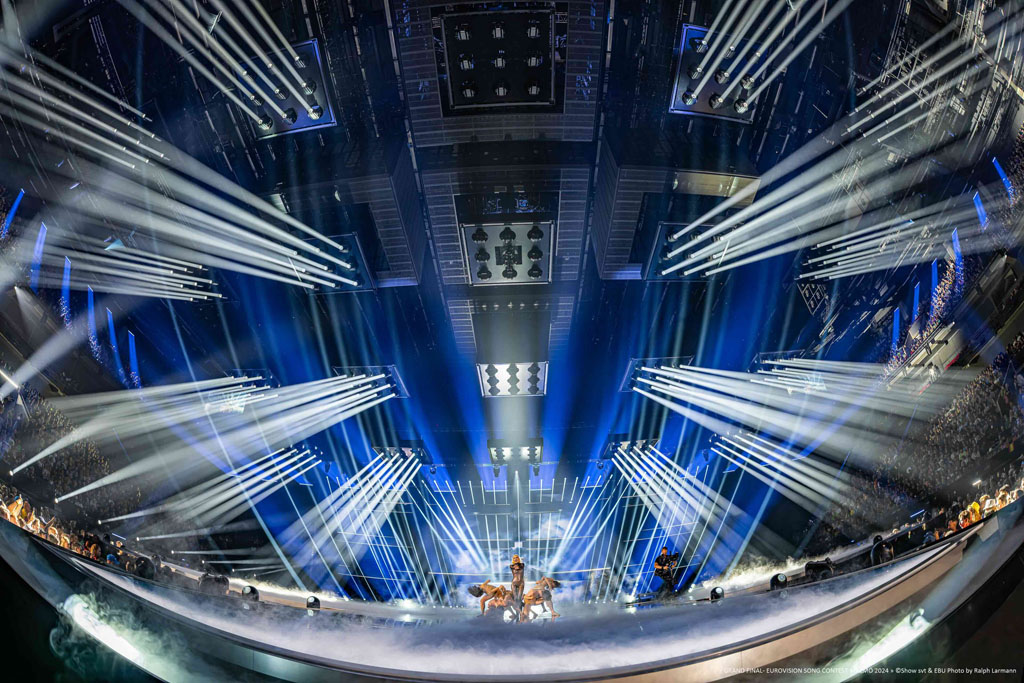
Eurovision 2024 was won in the end by Switzerland’s Nemo with their song “The Code”, closely beating Croatia’s Baby Lasagne with “Rim Tim Tagi Dim”, with Ukraine’s Alonya Alonya & Jerry Heil in third place with “Theresa & Maria”.
Under Technical Director Ola Melzig, a team of highly talented creatives, programmers, engineers, network architects, and technicians collaborated to stage the first ever in-the-round Eurovision, breaking technical barriers and records.
Lighting designer Fredrik Stormby, of Stockholm-based creative studio Greenwall Design, and his team took care of all things lighting as well as co- ordinating the screen content, working in close conjunction with production designer Florian Wieder.
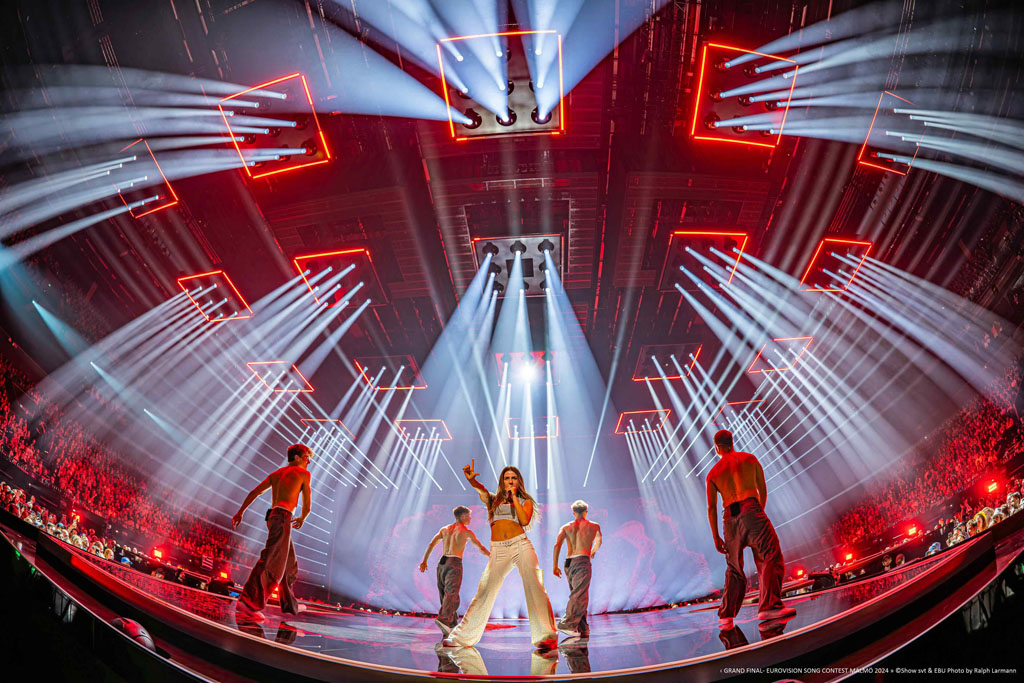
Fredrik Stormby is best known as part of the creative team behind Beyonce’s 2023 Renaissance tour, Loreen’s winning 2023 Eurovision performance, and ABBA Voyage in London. Fredrik’s programming team included lead programmer for effects lighting Ishai Mika, lead programmer for key lighting Dom Adams, plus Isak Gabre, Linus Pansell and Leo Stenbeck. The assistant lighting designer was Louisa Smurthwaite (who was follow spot caller for the 2023 event in the UK) and the two associate LDs were Mike Smith and Michael Straun who worked in day and night shifts during the five-week rehearsal and development period.
All lighting equipment was supplied by Creative Technology Sweden together with the video and audio equipment packages. The load in at Malmo started on April 3 and was preceded by four days’ prep at Creative Technology’s warehouse in Malmo, used as a production hub for all the equipment procurement and provisioning.
“As this was the third time Sweden had hosted the Eurovision Song Contest in 10 years, we set ourselves the challenge of doing something new and brave that would respectfully challenge the traditional Eurovision concept a little, and introduce a more large-scale concert tour feel to the familiar ‘studio show’ concept,” explains Fredrik Stormby.
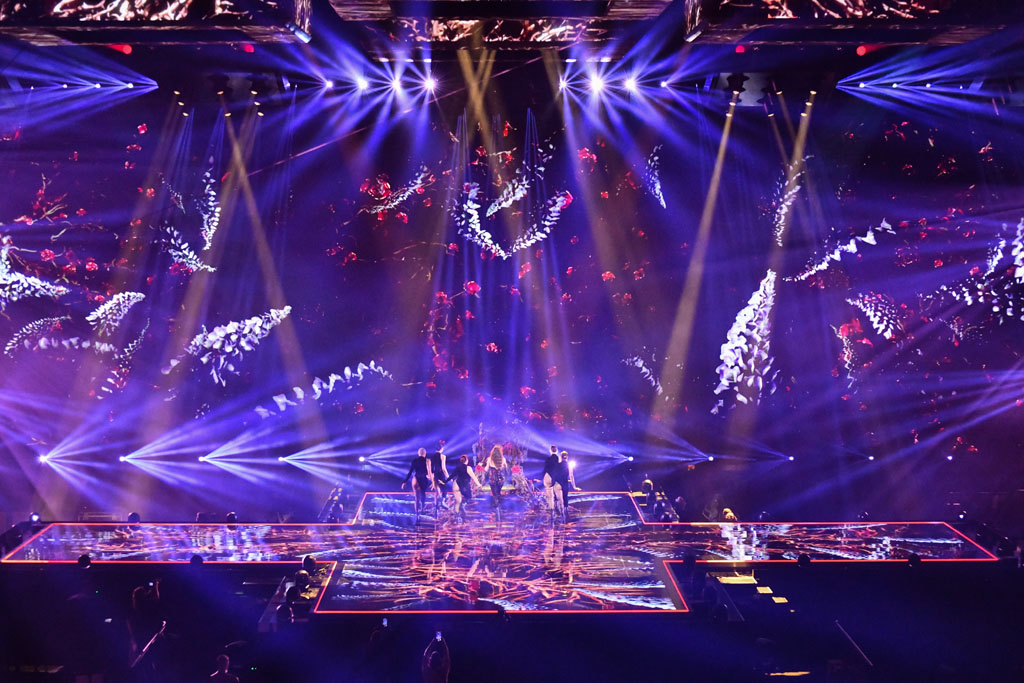
On Stage
The set was a 360-degree experience placed in the middle of the audience and shaped like an equilateral cross with movable LED cubes, LED floors, lighting, video and stage technology creating an array of visual variations for the artists. The monumental centrepiece of the design was a video and light installation suspended above the stage, embracing the artists and their performances and bringing the live and TV audiences close to the action.
The lighting and stage design had to support the very quick changes between acts, which allowed about 45 seconds for the crews to reset. The show was executed using only LED and laser light sources whose lower constant power consumption fit the event’s sustainability goals.
Technical Director Ola Melzig calls the design of the show “Groundbreaking. It was the first time in the round and was in the same venue where we introduced a standing audience for Eurovision in 2013. This year’s design from Florian Wieder featured a lot of straight lines in all directions. So linear fixtures became very important for us to outline and highlight the shape of the set. We put automation on everything using 199 hoists. Everything in the ceiling could move; the stage could constantly create new shapes and looks – it was a never-ending toolbox.”
Taking inspiration from Swedish music, songwriting and local architecture, and a tricky request from the producers to put the audience in shot for every performance, the designers developed a stage without any traditional scenic elements or shapes. “Most of the lighting design was to work with strong lines of fixtures – not many types – but densely used to give very strong expressions,” explains Stormby. “We could then use many combinations of these individually strong lines of lights and the many automated rig positions to create a very interesting palette.”
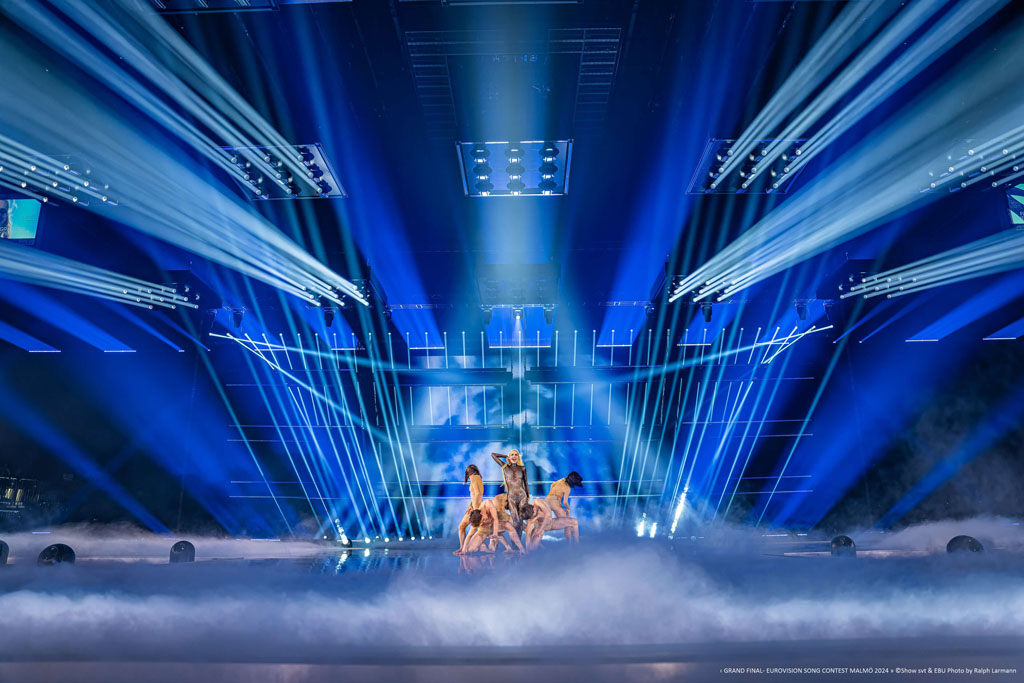
The result was a design with enough flexibility to create unique looks for each of the 37 participating countries’ very diverse performances. “It was great fun working with this rig because we could position it in so many different places that, as well as giving us all manner of side light, backlight and low lights, we could really play with the lighting and directions of lighting as well,” continues Stormby. “The openness of the 360° stage allowed us to invite the audience into the shots in a very natural way as part of the background. This is when we had to rely on the skills of our programmers! If we were shooting from one side of the stage, for example, we had to clean out all of the lights hitting the bleachers on the other side to make it look good. So we really produced the show shot by shot to achieve the big clean cool rock concert looks, yet were able to instantly cut to the hosts and back into Eurovision mode again. Eurovision is a cross over between television, theatre and show lighting and I think we succeeded in making the performances look like a big arena show. I was really happy with the overall outcome. It was 10 weeks of bonkers production but I’m proud of the result and we certainly ticked all the boxes in ‘respectfully challenging the concept.’ “
Robe
Included on the lighting plot were 52 Robe FORTES, 57 T1 Profiles and 14 T2 Profiles. These Robe moving lights were used to cover all the stage and Green Room key lighting requirements. These specific Robe fixtures were chosen for their excellent CRI, intensity, and overall quality of light.

The FORTES were fitted with the HCF (High Colour Fidelity) TRANSFERABLE ENGINE module from Robe’s TE series of ground- breaking self-referencing, data-capturing LED light engines that are all designed, developed, and manufactured at the Robe factory in the Czech Republic.
The 1,000W White 6.000K HCF LED engine offers 35,000 lumens and an exceptionally high inherent CRI of 96, making these luminaires perfect for this scenario. The T1 and T2 both have CRIs of 95 and are already well established in broadcast and theatre worlds for optimising skin tones and colours.

As well as being utilised for general key lighting, several FORTES were configured to run part of an extensive remote follow spotting system, so they could be called up and activated as needed.

“As with any broadcast show, key lighting is one of the fundamentals, so we were extremely pleased that Fredrik was happy to work with these Robe fixtures,” commented Emil Højmark, Creative Technology’s head of lighting for North Europe. He added that they received “great support from Robe’s technical team” throughout the event period.
ClayPaky
Claypaky Tambora Linear 100 high-power LEDs and Skylos white-laser source searchlights supported the dynamic look of the 360º stage. “Eurovision has a long, long relationship with Claypaky,” says Ola Melzig. “We world-premiered the Sharpy Wash in 2013.”
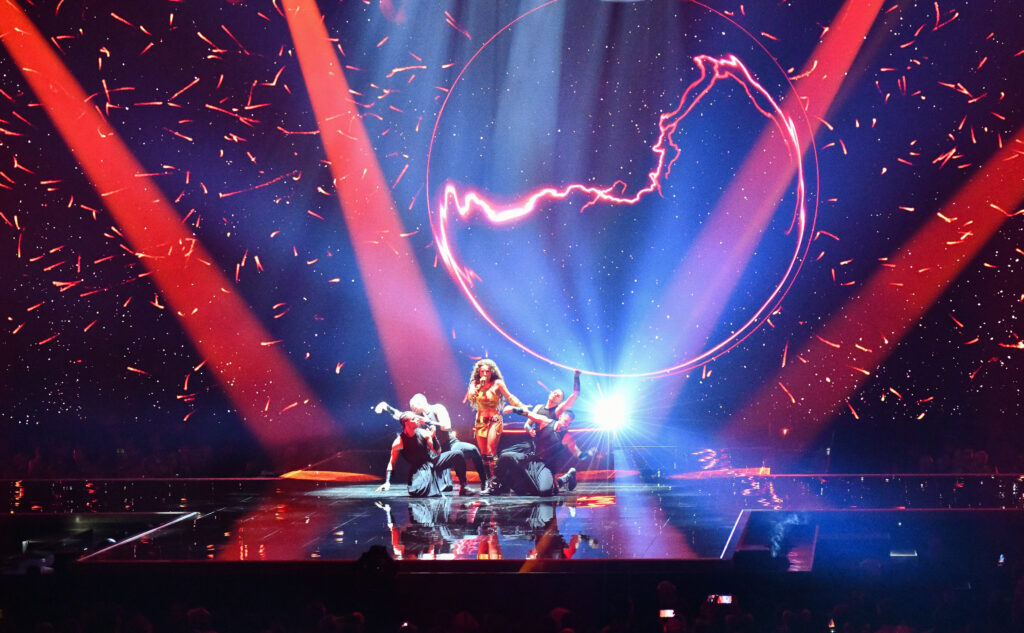
“I love Claypaky fixtures,” he declares. “Their lights are extremely reliable and the ratio is very important for me: size, weight, output and power consumption. That’s critical when you’re trying to be sustainable; every Watt counts, every gram counts on a 210-ton rig.”
Melzig explains that Niclas Arvidsson of Interlite, Claypaky’s distributor in Sweden, introduced the lighting team to the Tambora Linears. “He was great at helping us to source them since we needed 396 active Tamboras mounted on the [overhead] LED cubes, a real truckload. They were perfect for this show!”
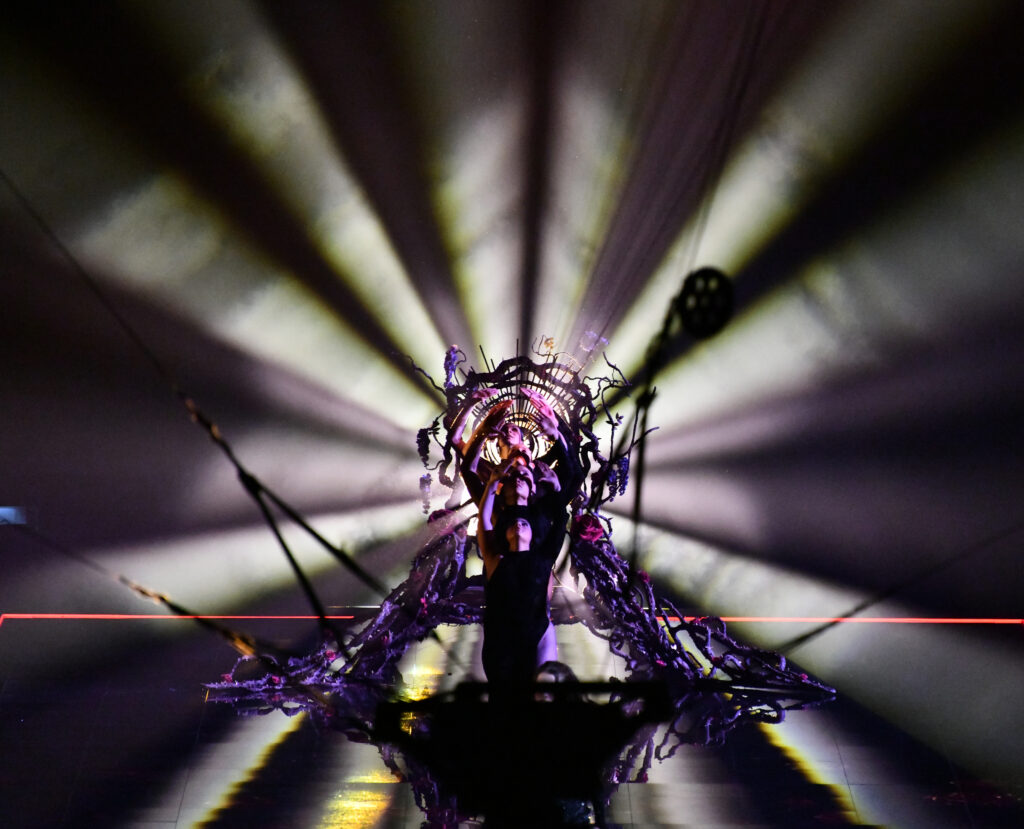
Fredrik Stormby adds; “The Tambora Linear was chosen for its look, features and size. I needed a compact, low-weight, bright linear fixture in large numbers that could act as a graphic element outlining the flown pods, but also work as a strobe. In addition to this they were also fully mapped in the disguise server, allowing for video content to be played out over the lighting rig. The Tambora Linear, with the black ND lens, was a perfect combination for us, allowing them to blend in with the black cladding of our pods and set.”
Twenty-five active Skylos searchlights were also employed for the show. “Fredrik wanted a big fixture with great punch,” Melzig says. “He just loved what he could do with the Skylos, and I loved them, too. They delivered quite a punch and were very attractive.”
“The Skylos fixture was something I knew I wanted on the show somehow,” adds Stormby. “I love big bold xenon beam and flower fixtures, and this is a new take on those. We ended up having them flown in an automated truss in front of the LED screen, that we could use in various heights, and flown along the sides of the stage over the bleachers. There were also five units positioned on the floor used for various specials. It worked great doing what it does.
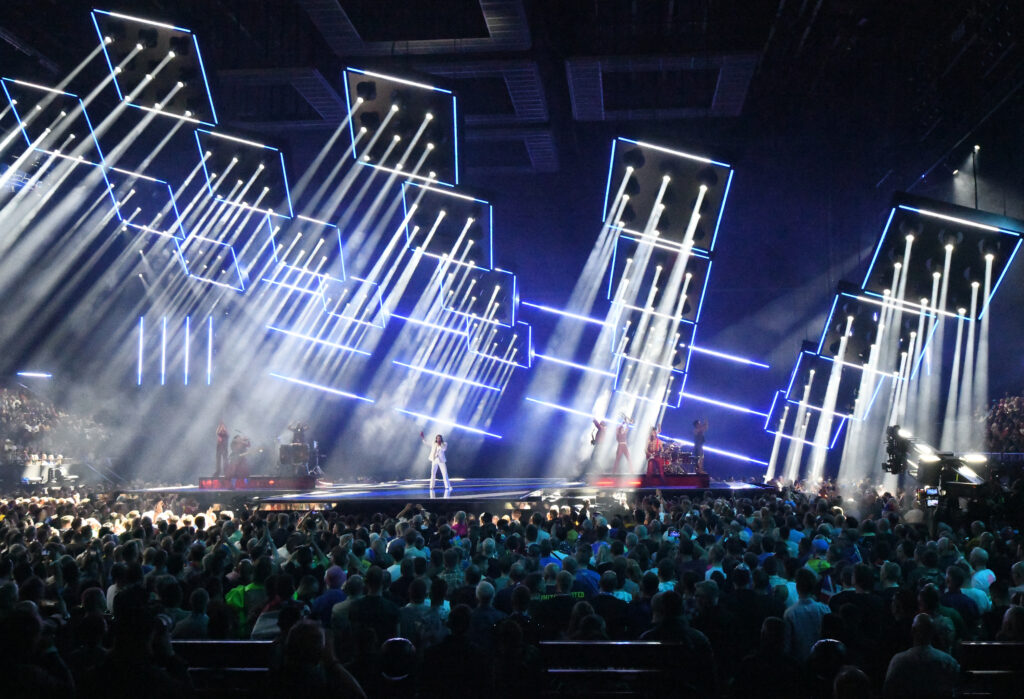
One of the things I’m mostly impressed with is the pan and tilt speed. It’s superfast, almost like a Sharpy on steroids!”
Ayrton
Key to Stormby’s exclusively LED and laser-based design were 384 new Ayrton Rivale Profiles and 146 newly-released Kyalami fixtures, along with 32 Huracán Wash, supplied by Creative Technology Group.
“I like to approach my television designs using dedicated keylight fixtures that have a certain quality of light to function well as key lights,” says Stormby. “I also like a single type of workhorse fixture throughout the rig that I can use for beam effects, mid-air effects, and to frame in on props or dancers, but can also support the key lighting to fill in as back or side lights. And that became the job of Rivale.”
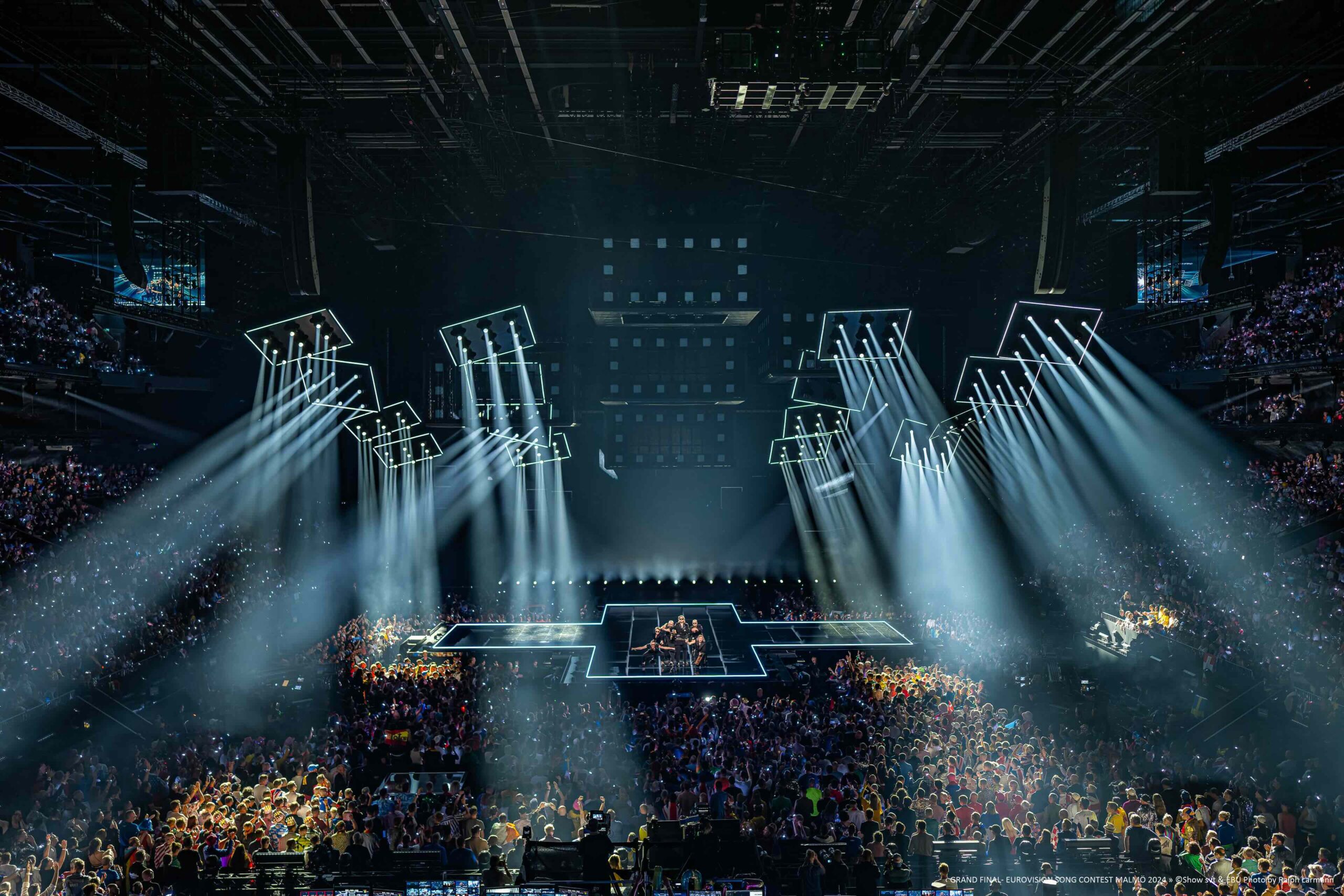
20 automated ‘pods’ each carrying Rivale Profiles in a 3×3 configuration allowed for a near-infinite number of aesthetic and practical positions. More Rivale Profiles were rigged in the audience trusses, above the stage and around the bleachers. “I was looking for a workhorse LED fixture with shutters and good colours that was affordable in large numbers. I also wanted good light quality, a narrow zoom, gobos, shaper blades and all the traditional stuff,” says Stormby. “We also needed to be careful of weight as there was so much hanging above the stage. I saw Rivale in Paris when it had just come out of development. It checked all those boxes and came in a compact, light-weight package which was perfect for what we wanted to achieve with this moving lighting rig.”
Thirty-two Huracán Washes were rigged on front of house and audience trusses: “I wanted a wash instrument with shutters that I could use for audience lighting but be able to shutter off the bleacher sections to avoid spill. I thought the Huracán Wash was a good pick because I had this idea that I might use soft gobos – which I didn’t in the end – but it was one of the features that attracted me. It turned out a nice big powerful, traditional wash light with some extra features which was exactly what I was looking for.”
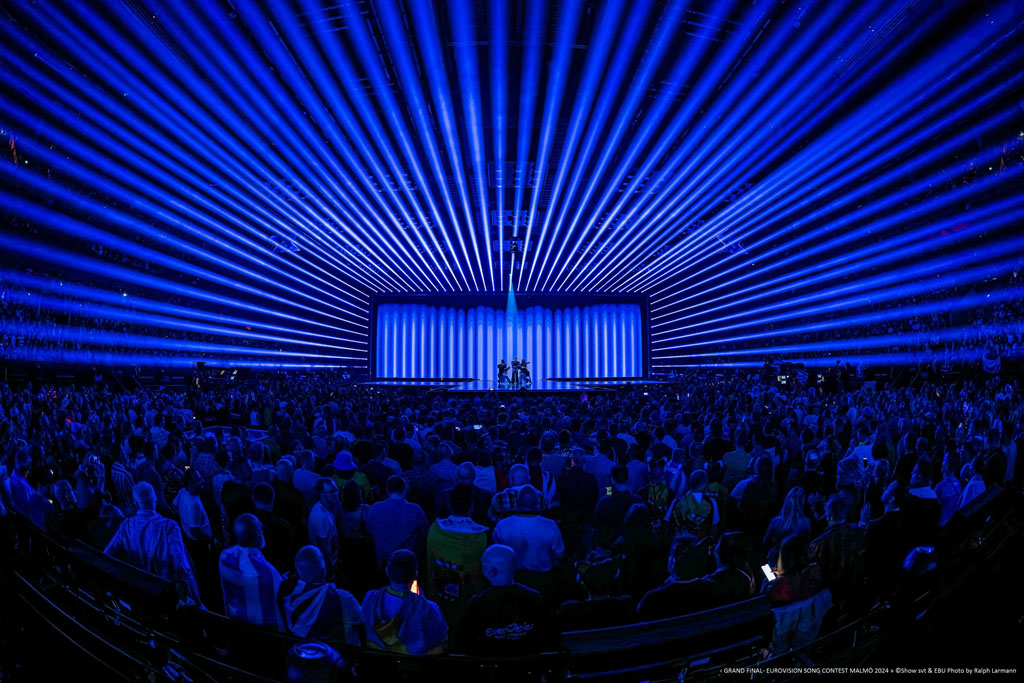
Looking for a fixture to outline the stage design in all dimensions, Stormby chose Ayrton’s newly released laser-sourced Kyalami. These he mounted on Wahlberg lifts around the stage edges where they could be raised and lowered to define the shape of the stage as required.
More Kyalami were rigged in a long vertical line in each of the two 18m high towers that flanked the main video screen. Yet more were rigged in “the biggest truss in the world!” – a 32m long truss using 62 Universes alone which hung in front of the main video screen, completing a ‘football goal’ effect with the side towers. “The Kyalami on the truss and the towers could form a box of light for framing the back screen. We could also lower the massive truss right down to stage level so the Kyalami could act as a floor package or raise it really high to open out into very wide effects, and so many different ways in between,” says Stormby.
“Kyalami was nearing the end of its development when I was shown it, but we could see it was a compact unit with a good strong beam which we made good use of punching through all that video! I really liked the speed of Kyalami’s optical effects. That is what that fixture is about: it’s small and quick, and the prism and frost can be brought in and out really quickly – you can create a lot of different effects with that. I like the fact that Rivale and Kyalami especially are such small fixtures but we can still pull off a show of this scale with them. That’s quite cool.”
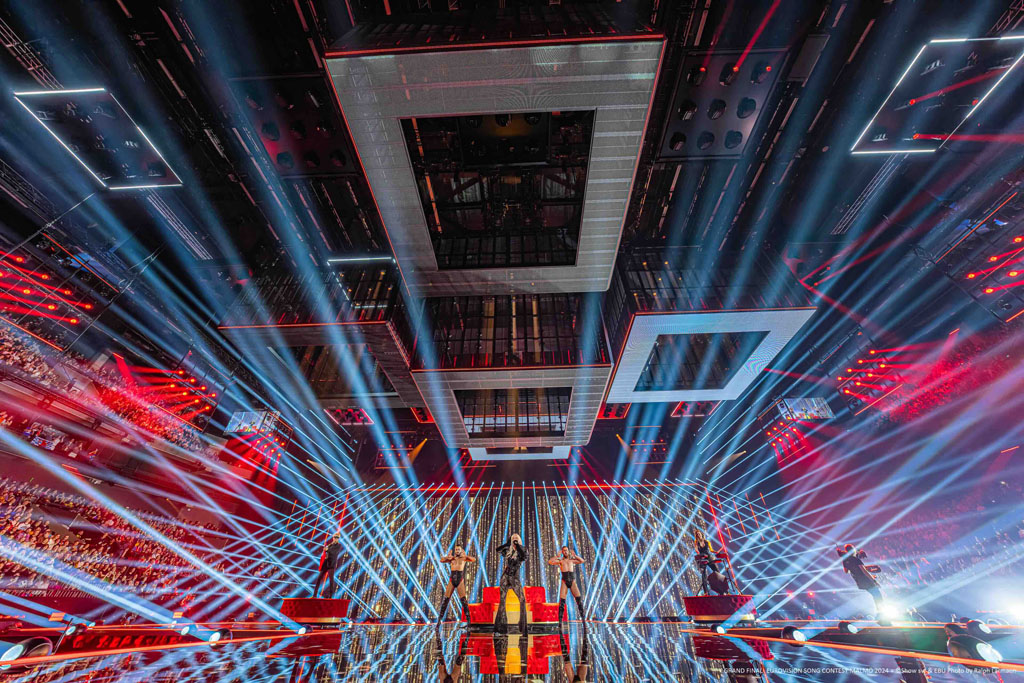
Creative Technology Group made a substantial investment in 276 Rivale Profiles and worked closely with VIGSØ Denmark to sub-hire the remainder of the huge inventory of Ayrton fixtures. The fixture selection process was supported by TopStage of Sweden who worked closely with the lighting designers to introduce, demonstrate and facilitate their choice of the new Ayrton fixtures.
Emil Højmark of Creative Technology comments: “We’d been looking into investing in Rivale long before Eurovision came along, but Eurovision sealed the deal! Eurovision has always pushed the technology and Ayrton, which has had a long involvement with Eurovision, has always pushed the envelope in product development. We had over 384 Rivale Profiles on site and very few issues – it’s proved a really stable platform. The Huracan Washes were similarly reliable and one of the few fixtures we had no problems with at all. Eurovision is a high tempo project with unique challenges, and having direct access to the Ayrton tech team on site made such a difference. They are so passionate and dedicated delivering outstanding communication and support.”
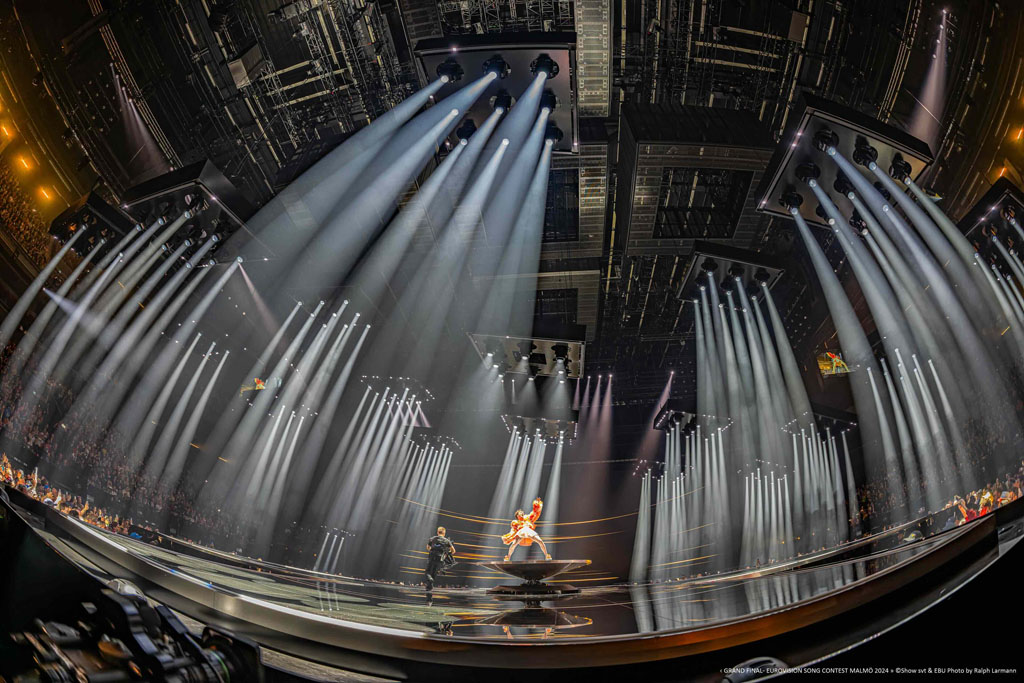
Ayrton joined forces with VIGSØ to ensure everything was delivered and prepped in under 48 hours. “It was very impressive,” concludes Højmark. “VIGSØ did what I’ve never seen before from a distributor to pull this together. All departments worked really well together.
It was hard work but good fun and all done in good Eurovision spirits.”
“The collaboration with Creative Technology was great, and it was exciting to be involved in the decision-making process from the start,” says Linnea Ljungmark of TopStage, Ayrton’s exclusive distributor for Sweden. “When Fredrik came to me early in the process to discuss lights for Eurovision, it was clear to me that he was looking for a very unique look – not a specific brand – with what the fixtures could achieve. Ayrton was able to provide this and it’s been really great to follow him through the process from initial idea to final design.”
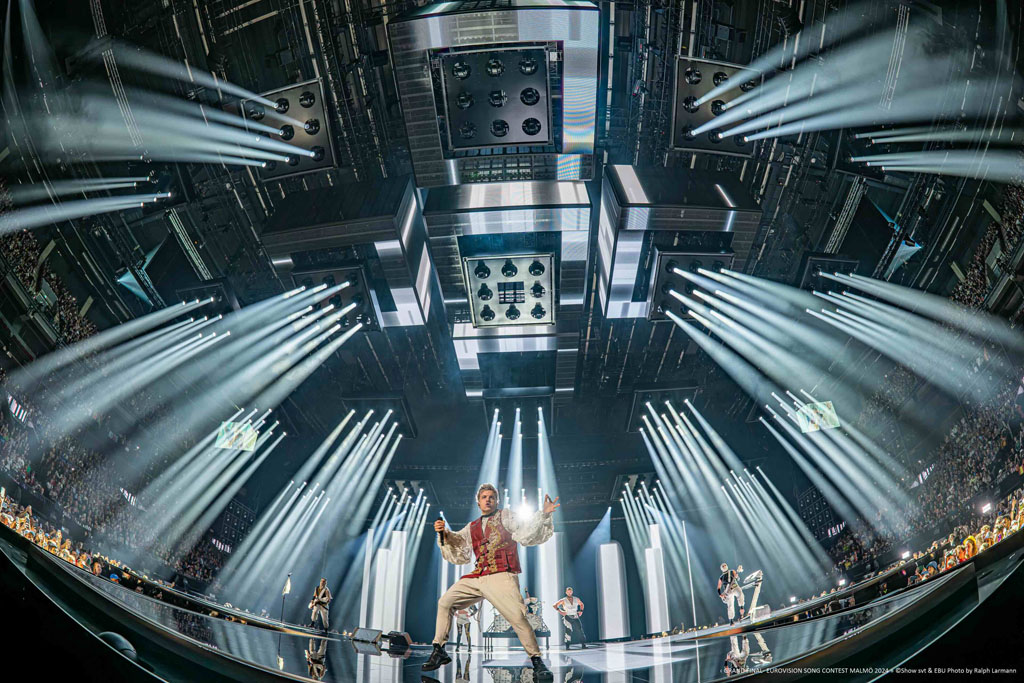
“I think Creative Technology carried out an excellent delivery,” says Fredrik Stormby. “With a rig designed like this with everything in straight lines, it really comes down to the finish of the build to make it look good and they really pulled that off. I’m really happy with CT and I’m really happy with the support from Ayrton.”
Production Credits
- Senior Technical Director: Ola Melzig Production Designer: Florian Wieder
- Lighting & Screen Content Designer: Fredrik Stormby
- Associate Lighting Designers: Mike Smith and Michael Straun
- Assistant Lighting Designer (Viewing Room): Louisa Smurthwaite
- Followspot Caller: Per Hörding
- Lighting Directors & Lead Programmers: Ishai Mika & Dom Adams
- Lighting Programmers: Leo Stenbeck, Linus Pansell, Isak Gabre
- Lighting Supplier: Creative Technology
Subscribe
Published monthly since 1991, our famous AV industry magazine is free for download or pay for print. Subscribers also receive CX News, our free weekly email with the latest industry news and jobs.

